If you enjoy this content, please share it with a colleague
Canon Medical Systems USA
With headquarters in Tustin, Calif., Canon Medical Systems USA Inc. markets, sells, distributes and services radiology and cardiovascular systems, and coordinates clinical diagnostic imaging research for all modalities in the United States. Canon Medical Systems Corporation, an independent group company of Canon Inc., is a global leading provider of diagnostic imaging systems including CT, MRI, Ultrasound, X-ray systems and clinical laboratory systems. In business for more than 100 years, Canon Medical Systems Corporation (formerly Toshiba Medical Systems Corp.) was built to improve the quality of life for all people. It delivered on this mission with medical innovations that are “Made for Life”—made to improve the lives of patients, clinicians and administrators. Its legacy was built with pioneering medical technology, such as the world's first X-ray machines in 1932 and Japan's first magnetic resonance imaging (MRI) systems in 1983. Canon Inc. entered the healthcare business in 1940 with the development of Japan’s first indirect X-ray camera which was used for the early detection of pulmonary tuberculosis. The partnership of Toshiba Medical Systems Corporation and Canon (now Canon Medical Systems Corp.) brings together two cutting-edge technology businesses, founded with similar values of creativity, flexibility and patient-friendly healthcare solutions. Today, their combined history of research and innovation drive forward Canon Medical Systems’ vision for building a world-class healthcare enterprise. For more information: https://us.medical.canon/
Canon Medical Systems’ offering includes: computed tomography, magnetic resonance, ultrasound, X-ray, cath and EP lab
Videos
-
August 31, 2021
Several radiology IT vendors at 2021 Healthcare Information Management Systems Society (HIMSS) conference demonstrated computed tomography (CT) imaging advanced visualization software software to help automatically identify and quantify COVID-19 pneumonia in the lungs. These tools can help speed assessment of the lung involvement and serial tracking can be used to assess the patient's progress in the hospital and during long-COVID observation.
Examples of COVID analysis tool shown in this video include clips from booth tours at:
• Fujifilm
• Siemens Healthineers
• Canon (Vital)Canon received FDA clearance for its tool under and emergency use authorization (EUA).
Siemens said its tool was part of its lung analysis originally developed for cancer but modified and prioritized to aid in COVID assessments.
HIMSS Related Content:
Advances in CVIS and Enterprise iImaging at HIMSS 21
Photo Gallery of New Technologies at HIMSS 2021
VIDEO: Importance of Body Part Labeling in Enterprise Imaging — Interview with Alex Towbin, M.D.
VIDEO: Coordinating Followup for Radiology Incidental Findings — Interview with David Danhauer, M.D.
VIDEO: Cardiology AI Aggregates Patient Data and Enables Interactive Risk Assessments
VIDEO: Example of Epsilon Strain Imaging Deep Integration With Siemens CVIS
January 26, 2021This is an example of a COVID-19 (SARS-CoV-2) positive patient's lung computed tomography (CT) scan. The video scrolls through the image slices of the scan and shows the typical white, ground glass opacities (GGO) caused by COVID pneumonia. The pneumonia typically appears along the walls of each lobe of the lung, especially the chest wall and the lower portions of the lungs. This scan is from a Canon Aquilion Prime SP CT scanner and used Advanced intelligent Clear-IQ Engine (AiCE), an artificial intelligence-driven image reconstruction software to improve image quality of lower-dose scans. This was shown by Canon Medical as an exmaple of CT image quality for the virus at the 2020 Radiological Society of North American (RSNA) meeting.
Read more about this system and its launch in 2020 to address COVID, Canon Medical Launches CT Solution for Patients with Viral Infectious Diseases.
VIDEO: How to Image COVID-19 and Radiological Presentations of the Virus interview with Margarita Revzin, M.D., associate professor of radiology and biomedical imaging, Yale School of Medicine.
Find more radiology clinical images of coronavirus in this photo gallery.
February 08, 2019This is an example of an arterial venous malformation (AVM) in the brain imaged on a Canon Alphenix Alpha angiography system. It shjows a contrast injection highlighting the vessels, which have been color coded to show the position of the veins and arteries involved in this vascular defect.
July 21, 2017DAIC and ITN Editor Dave Fornell discusses some of the most innovative new computed tomography (CT) technology and trends at the Society of Cardiovascular Computed Tomography (SCCT) 2017 meeting. Read the article "Advances in Cardiac CT Technology" and watch VIDEO: Advances in Cardiac CT Imaging.
October 05, 2016Contributing Editor Greg Freiherr offers an overview of digital radiography (DR) advances at the Association for Medical Imaging Management (AHRA) 2016 meeting. Read the article “The Coming Push for DR.” Watch a technology report sidebar video on new DR Systems technology.
December 14, 2015Video discussion of new technology and trend highlights at the Radiological Society of North America (RSNA) 2015 meeting with ITN editor Dave Fornell and ITN contributing editor Greg Freiherr.
December 11, 2015ITN/DAIC Editor Dave Fornell shows his choices for some of the most innovative new imaging technologies on the expo floor at Radiological Society of North America (RSNA) 2015 meeting.
December 11, 2015Interview with Jon Brubaker, MBA, RCVT, ultrasound technology analyst, MD Buyline, explains the trends and new technology he saw at the Radiological Society of North America (RSNA) 2015 meeting.
July 18, 2014The Aplio 500 CV is the system of choice for all premium 2-D cardiac exams. Featuring Toshiba's 2-D Wall Motion Tracking technology, the system provides stunning visualization and quantitative analysis of myocardial wall motion with unrivaled accuracy and reproducibility. With on-board cardiac quantification measurements in all directions (radial, circumferential, 2D rotation and longitudinal), the Aplio500 CV system is designed to get the most comprehensive information anytime and anywhere in the hospital, right at the patient's bedside. Additional cardiac-specific technologies include Tissue Enhancement, Advanced Dynamic Flow, Lateral Gain Controls, Tissue Doppler, Stress Echo, Flex-M Mode and Auto IMT. The system is easy to use, with superior ergonomics and a smaller footprint, making it easier to maneuver for greater patient access and improved workflow. For more information: http://medical.toshiba.com/products/ul/cardiovascular/index.php
July 03, 2014DAIC Editor Dave Fornell highlights his choices for some of the most innovative new technology at the American Society of Echocardiography (ASE) 2014 meeting.
June 20, 2014DAIC Editor Dave Fornell shares his choices for the most innovative new technologies in nuclear imaging that were on display at the 2014 Society of Nuclear Medicine and Molecular Imaging (SNMMI) annual meeting.
July 15, 2013DAIC Editor Dave Fornell highlights some of the biggest trends and most innovative technology discussed during the American Society of Echocardiology (ASE) 2013 annual meeting.
RELATED CONTENT
NewsMay 16, 2012 — Steinberg Diagnostic Medical Imaging Center (SDMI) in Las Vegas has installed the first Aquilion Prime 160 series from Toshiba America Medical Systems Inc. in the United States.
Feature | Dave FornellHardware and software advances are enabling echocardiography to greatly expand its capability with increased quantification accuracy, ease-of-use, increased workflow efficiencies and wider use outside of echo labs. Today, cardiovascular ultrasound systems are being integrated into point-of-care for triage, and in operating rooms and cath labs for procedural guidance to cut the use of contrast and ionizing radiation.
TechnologyMay 1, 2012 – Toshiba America Medical Systems Inc. announces the FDA clearance of the AquilionTM PRIME 80 series CT system, the latest addition to the Aquilion CT product line. Producing high-quality clinical images and reducing radiation exposure with Adaptive Iterative Dose Reduction 3D (AIDR 3D), the system can generate 80 unique slices per rotation. The Aquilion PRIME 80 series, designed with in-field upgradeability to 160 slices, gives healthcare facilities the ability to perform a wide variety of advanced clinical procedures today and to grow as clinical needs expand.
TechnologyApril 27, 2012 – Toshiba America Medical Systems Inc. announced the FDA clearance of Adaptive Iterative Dose Reduction 3D (AIDR 3D), the company’s newest dose-reduction technology. Toshiba will offer the AIDR 3D software upgrade and related training, complimentary, to all existing Aquilion ONE, Aquilion Premium and Aquilion PRIME CT customers.
Feature | Helen KuhlFew imaging market segments have seen as much activity in the past six to nine months as digital radiography (DR) has. Comprising everything from retrofit kits to full suites — with a score of wireless options — the marketplace is filled with vendors improving old systems, introducing new ones and getting their products into more healthcare providers’ hands.
Feature | Dave FornellWhile computed tomography (CT) has revolutionized medical imaging, it has also required much higher doses of ionizing radiation than was previously used in traditional X-ray imaging. In recent years, vendors have turned their attention to developing technology to drastically reduce dose.
Feature | Blaise HopeWith the advent of handheld ultrasound systems, the idea of a doctor in the emergency department (ED) with an ultrasound clipped to his keyboard is not too far-fetched. We are not there yet, but competition is growing in the market. While there are signs the market has begun to mature, there also are signs it could expand into new territory.
NewsMarch 23, 2012 — Improving the ability to diagnose cardiac disease with advanced ultrasound imaging, Toshiba America Medical Systems Inc. will showcase the newest additions to its ultrasound product line, Aplio 500 and Aplio 300, at the American College of Cardiology’s annual meeting March 24-27, 2012 in Chicago. Toshiba will also be introducing new enhancements to its Aplio Artida flagship cardiac ultrasound.
Feature | Tobias GilkIn imaging departments around the world, MR systems are stronger and faster, with greater image resolution than those of just a few years ago. And yet, all of this whiz-bang technology has yet to make a significant dent in the burning need of imaging providers — to reduce patient scheduling windows.
NewsFebruary 9, 2012 — To enhance the diagnostic capabilities of ultrasound and improve patient care, Spectrum Health in Grand Rapids, Mich., installed the first Aplio 500 ultrasound system from Toshiba America Medical Systems. The system offers advanced visualization capabilities, workflow automation tools, superior ergonomics and Fly Thru and Smart Fusion technologies.
© Copyright Wainscot Media. All Rights Reserved.Subscribe NowE-newsletter Subscription form

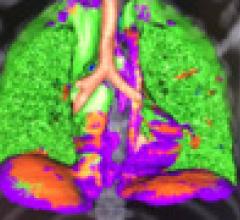
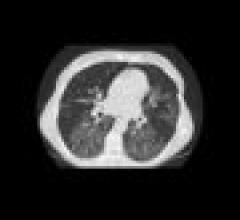
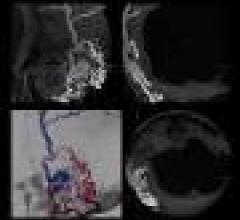
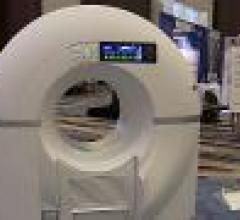
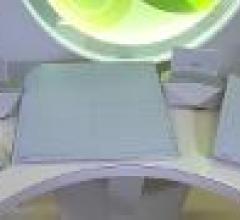
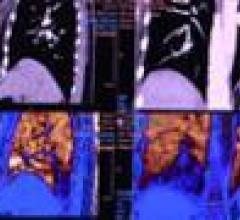


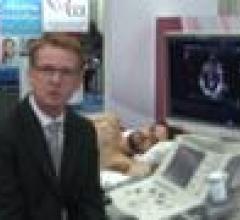
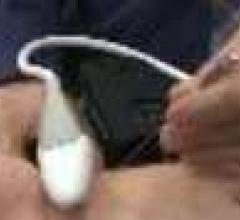
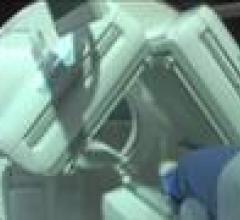
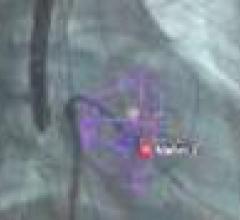
 May 16, 2012
May 16, 2012 








